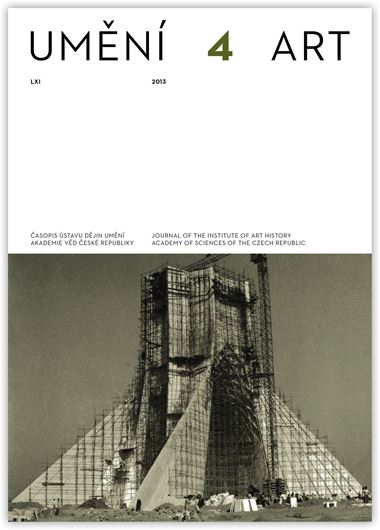Hedvika Kuchařová – Radim Vondráček
Cenzura náboženských obrazových materiálů ve dvacátých a třicátých letech 19. století
This article presents an analysis of the censorship protocols developed by Jeroným Zeidler (1790-1870), later abbot of Strahov Monastery (from 1834), for illustrated materials when he held the function of censor. The article opens with a summary of the literature on the subject and a description of Zeidler’s work as a censor and of the applicable censorship rules and regulations. This is followed by an analysis of the protocols and an outline of the censorship process from the point of a work’s submission to its publication. The article shows that censorship was applied to a relatively broad range of artistic works, the majority of them religious prints, many of which were intended for sale at pilgrimage sites. Book illustrations and more sophisticated works of art, such as lithographic reproductions of works by the old masters, were also subject to censorship. The protocols affected a very broad circle of sources of artistic works, ranging from the most prestigious lithographic workshop in Bohemia in the 1820s run by Antonín Machek to lithograph and copper-plate printers such as Gottlieb Haase and Václav Hoffmann and many others now forgotten or unknown. Many entries in the protocols were identified and revealed as the works of famed artists (Josef Führich and Antonín Gareis elder) concealed behind the name of the person who submitted them. In his analyses, Zeidler primarily assessed the iconographic accuracy of a work, its thematic balance and its suitability for religious use. His criticisms usually addressed the problem of the ahistorical nature of a scene or concerns about excessive emphasis on sensual aspects and in particular the depiction of nudity. However, the majority of the materials submitted for censorship passed through the process without problems, at most with a demand that a change be made in a text owing to linguistic or factual errors. The censorship protocols extend our knowledge of nineteenth-century publishing and printing practices and the mechanisms of state control they were subjected to. They provide an unusually comprehensive overview of one area of print production, much of which was of an ephemeral nature. They provide an insight into the work of top print workshops of the nineteenth century and of unknown copper-plate printers, and offer particularly variable information on early artistic lithography in Bohemia.
Full-text in the Digital Library of the Czech Academy of Sciences:
https://kramerius.lib.cas.cz/uuid/uuid:05a48d4a-59d1-4a08-b42a-d838ccada151
< back

